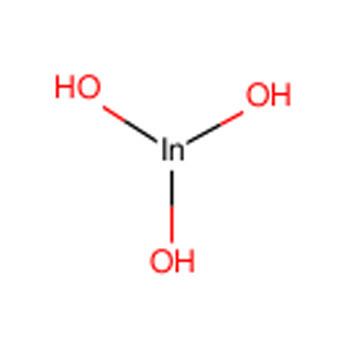Molar mass 165.8404 g/mol Appearance white | Density 4.38 g/cm³ | |
 | ||
Indium(III) hydroxide is the chemical compound with the formula In(OH)3, its prime use is as a precursor to indium(III) oxide, In2O3. It is sometimes found as the rare mineral dzhalindite.
Contents
Structure
In(OH)3 has a cubic structure, space group Im3, a distorted ReO3 structure.
Preparation and reactions
Neutralising a solution of an In3+ salt such as In(NO3)3, indium nitrate or a solution of InCl3 gives a white precipitate that on ageing forms In(OH)3. A thermal decomposition of freshly prepared In(OH)3 shows the first step is the conversion of In(OH)3.xH2O to cubic In(OH)3 The precipitation of indium hydroxide was a step in the separation of indium from zincblende ore by Reich and Richter the discoverers of indium.
In(OH)3 is amphoteric, like Ga(OH)3 and Al(OH)3 but is much less acidic than Ga(OH)3 having a lower solubility in alkali than in acid and is for all intents and purposes a basic hydroxide. Dissolving In(OH)3 in strong alkali gives solutions that probably contain either four coordinate In(OH)4− or In(OH)4(H2O)− Reaction with acetic acid or carboxylic acids is likely to give the basic acetate or carboxylate salt, e.g. In(OH)(OOCCH3)2.
At 10MPa pressure and 250-400 °C In(OH)3 converts to indium oxide hydroxide, InO(OH) (which has a distorted rutile structure)
Rapid decompression of samples of In(OH)3 compressed at 34 GPa causes decomposition, yielding some indium metal
Laser ablation of In(OH)3 gives InOH, indium(I) hydroxide, a bent molecule with an In-O-H angle of around 132 ° and an In-O bond length of 201.7 pm
